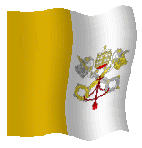Firstly it should be acknowledged that Mit Brennender Sorge is an impressive document and should be remembered - along with Non Abbiamo Bisogno - as a condemnation issued by a high-profile world leader at a time when many others were still treating with both the Fascists and the Nazis.
Therein, however, lies the problem. Before he condemned both regimes - and historical rumour tells us that Pius was preparing a stinging condemnation of Mussolini at the time of his death in February 1939 - Pius had worked rather too closely with both.
In the early 1920s Pius categorised Benito Mussolini as 'a man whom providence has sent'. The eventual fruits of their understanding was the 1929 Lateran Treaties which finally solved the 59 year old Roman Question. However, in aligning himself with Mussolini, Pius accepted - among other things - the political emasculation of the Italian Catholic Party - the Popolari - led by Don Luigi Sturzo.
Similarly following the 1933 Concordat with Hitler's government, the Zentrum - Germany's Catholic Party - was politically neutered.
So, what was Achille Ratti up to? Quite simply he saw the real enemy as Communism and was prepared to buy into the concept that ‘the enemy of my enemy is my friend’.




No comments:
Post a Comment